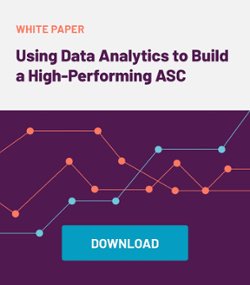
- ASC Software, Thought Leadership, ASC Operations
- BY: David Howerton
- May 29, 2019
ASCA 2019 was a whirlwind, but the good kind of whirlwind. We made a lot of new friends, renewed ties with old ones, and learned a thing or two. While those are perhaps the best kind of takeaways from a trade show, the buzz coming from inside our booth and out in the exhibition hall kept hovering around several key issues: reporting, data, preparing for the increase in Total Joint Replacement surgeries, bundled payments, and marketing.
While there were some other rumblings around the hall — how to grow referrals, workplace bullying, pain control and the opioid abuse epidemic — these were the topics that commanded the conversational space.
Here’s a closer look at each one.
ASC Reporting
We heard a lot about “chaos," “tornado of activity” and “craziness” when describing the typical ASC work day, especially as it applies to reporting. From state reporting to credentialing, quality, claims management and what’s needed to maintain their Centers for Medicare and Medicaid (CMS) certification, the average ASC submits 30 or more reports each month. Most participants in our focus group session indicated they spend 4 or more hours compiling and modifying weekly reports.
While most understand whythe reports must be generated, the frustration comes instead from the contorted process they have to go through to generatethe reports. It’s too cumbersome to get reports out of their current system. Often, their EHR and practice management software lacks drill-down capabilities, resulting in additional reports to get the information they need. There’s a lot of retrofitting, such as failed activities for claim coding.
Frustration with balky software for reporting is likely why so many we met with were still charting on paper. Based on their experience with private practice software, many ASC administrators are reluctant to go electronic unless they have to.
Data, Data, Data
 Fast on the heels of reporting is the inability to read and understand the amount of data the average ASC generates. So much data is captured, but it’s hard to make any use of it. While other industries take for granted the ability to cleanly access their data, ASCs typically have to work overtime to get at the data they want. Centers want their data in an easy to read, easy to understand format that doesn’t require extra clicks — and extra hours — to get through their day.
Fast on the heels of reporting is the inability to read and understand the amount of data the average ASC generates. So much data is captured, but it’s hard to make any use of it. While other industries take for granted the ability to cleanly access their data, ASCs typically have to work overtime to get at the data they want. Centers want their data in an easy to read, easy to understand format that doesn’t require extra clicks — and extra hours — to get through their day.
Total Joint Replacements
The lead-off session at this year’s conference on Total Joint Replacements was a sure sign that TJRs in an ASC setting are definitely top of mind for many. Total knee and hip replacements, which used to be the exclusive domain of inpatient settings, has now migrated to ASCs, thanks to innovations in procedures and anesthesia. Preparation for taking on TJRs touches every aspect of ASC operations, from patient preparation to reimbursement and contracting.
Bundled Payments and Case Costing
With the emergence of the CMS Bundled Care Payment initiative, case costing has become the most challenging reporting category for ASCs. “People have to really sharpen their pencils,” says Marta Shultz, Simplify’s vice president of quality. “They have to learn how to optimize performance and have the advanced reporting capabilities necessary to come out ahead.”
Surgery Centers Need Marketing
Aligning capacity and demand, keeping a pulse on patient satisfaction, recruiting new physician partners and responding to the increasingly competitive ASC landscape means more centers are turning their attention towards marketing. It’s another aspect of building out their business practice that many are realizing they need to embrace pronto.
Finding a New Way to Do Business in an ASC
Still, the elephant in the room — or rather, convention hall — pointed to what’s not a trend at all, but back to the chaos and craziness that defines a typical day in an ASC. Aside from the essentials of running an effective Operating Room(s), there’s the complexity of too many vendors to manage, moving among a dizzying array of software products, negotiating vendor contracts, and dealing with customer support that’s practically nonexistent. It’s easy to accept the chaos as status quo, because there’s no time to think or look for new solutions.
We believe the ASC market has an overwhelming appetite to find a new way to do business, because the status quo isn’t sustainable. That’s why our ASC management platform was designed to give you the two things missing from your day: extra time, and access to the data you need to improve your center.
We calm the chaos with a beautifully intuitive, flexible and complete platform. Drill-down reporting, case costing analytics and other tools allow you to seamlessly unify and consolidate reports with incredible ease. Our Business Intelligence tool allows you to convert your data into actionable information.
Ready to carve more time out of your day? Find out more in our newsletter, and get the latest on how to calm the ASC chaos.

